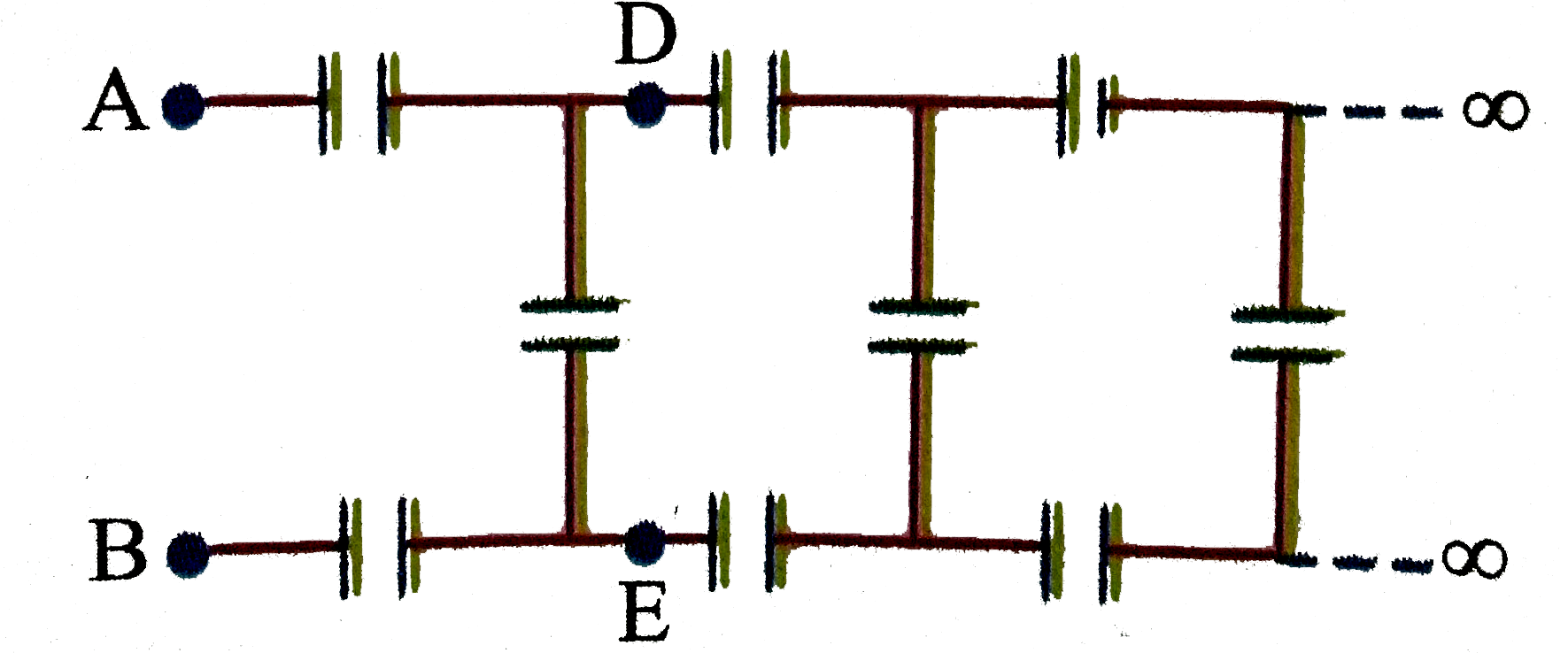The differeence in the effective capacity of two similar capacitor when joined in series and then in paralllel is 6 μ F the capacity of each capacitor is
2μF
4μF
8μF
16μF
The correct Answer is:B
Cp−Cs=6(ButCp=n2Cs)
∴ n2Cs−Cs=6
4×C2−C2=6
2C−C2=6
3C2=6
∴ C=4μF
Topper's Solved these Questions
Similar Questions
Knowledge Check
The difference in the effective capacities of two similar capacitors when joined in series and then in parallel is 6μF. The capacity of each capacitor is
A2μFB4μFC8μFD16μFThree capacitors each of capacity C are first joined in parallel and then in series. It is found that the difference in their effective capacities when joined in parallel and series respectively is 16μF. What is the capacitance of each capacitor?
A3μFB4μFC5μFD6μFIn a parallel plate capacitor , the capacity increases if
Aarea of the plate is decreasedBdistance between the plate increasesCarea of the plate is increasedDdielectric constant decrease
Two identical capacitors when joined in series have an effective capacitance of 3μF. When connected in parallel, the effective capacitance becomes 12μF. What is the capacitance of each capacitor ?
View SolutionTwo equal capacitors are first connected in series and then in parallel. The ratio of the equivalent capacities in the two cases will be:
View SolutionWhen threee capacitors of equal capacities are connected in parallel and one of the same capacity is connected in series withs its combination . The resultant capacity is 3.75μF. The capacity of each capacitor is
View SolutionTwo identical capacitors are first connected in series and then in parallel. The difference between their effective capacities is 3μF. The capacity of each capacitor is
View SolutionThe equivalent capacity of the infinite net work shown in the figure (across AB) is (Capacity of each capacitor is 1μF)
 .
.
View Solution
